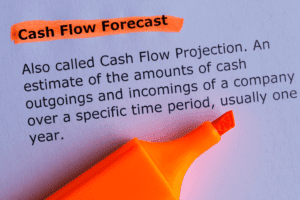2 4: The Basic Accounting Equation Business LibreTexts
Гама казино вход: быстрый старт к победе
11/15/2023What is a Database Administrator DBA and What Do They Do?
12/13/20232 4: The Basic Accounting Equation Business LibreTexts

The expanded accounting equation is a form of the basic accounting equation that includes the distinct components of owner’s equity, such as dividends, shareholder capital, revenue, and expenses. The expanded equation is used to compare a company’s assets with greater granularity than provided by the basic equation. Contributed capital and dividends show the effect of transactions with the stockholders. The difference between the revenue and profit generated and expenses and losses incurred reflects the effect of net income (NI) on stockholders’ equity. Overall, then, the expanded accounting equation is useful in identifying at a basic level how stockholders’ equity in a firm changes from period to period. As you can see, no matter what the transaction is, the accounting equation will always balance because each transaction has a dual aspect.
- For starters, it doesn’t provide investors or other interested third parties with an analysis of how well the business is operating.
- Deskera Books is an online accounting software that enables you to generate e-Invoices for Compliance.
- Journal entries often use the language of debits (DR) and credits (CR).
- The inventory (asset) of the business will increase by the $2,500 cost of the inventory and a trade payable (liability) will be recorded to represent the amount now owed to the supplier.
- Overall, then, the expanded accounting equation is useful in identifying at a basic level how stockholders’ equity in a firm changes from period to period.
It can be found on a balance sheet and is one of the most important metrics for analysts to assess the financial health of a company. The accounting equation is the foundation of double-entry bookkeeping which is the bookkeeping method used by most businesses, regardless of their size, nature, or structure. This bookkeeping method assures that the balance sheet statement always equals in the end. A trade receivable (asset) will be recorded to represent Anushka’s right to receive $400 of cash from the customer in the future. As inventory (asset) has now been sold, it must be removed from the accounting records and a cost of sales (expense) figure recorded. The cost of this sale will be the cost of the 10 units of inventory sold which is $250 (10 units x $25).
Everything to Run Your Business
The global adherence to the double-entry accounting system makes the account keeping and tallying processes more standardized and more fool-proof. Think of retained earnings as savings, since it represents the total profits that have been saved and put aside (or “retained”) for future use. Debt is a liability, whether it is a long-term loan or a bill that is due to be paid. Accounts receivable list the amounts of money owed to the company by its customers for the sale of its products. Therefore cash (asset) will reduce by $60 to pay the interest (expense) of $60. The net income from the income statement will be used in the Statement of Equity.
So, let’s take a look at every element of the accounting equation. Shareholders’ equity is the total value of the company expressed in dollars. Put another way, it is the amount that would remain if the company liquidated all of its assets and paid off all of its debts. The remainder is the shareholders’ equity, which would be returned to them. The double-entry practice ensures that the accounting equation always remains balanced, meaning that the left side value of the equation will always match the right side value.
Want More Helpful Articles About Running a Business?
Merely placing an order for goods is not a recordable transaction because no exchange has taken place. In the coming sections, you will learn more about the different kinds of financial statements accountants generate for businesses. This equation should be supported by the information on a company’s balance sheet. The Accounting Equation is the foundation of double-entry accounting because it displays that all assets are financed by borrowing money or paying with the money of the business’s shareholders. Although the balance sheet always balances out, the accounting equation can’t tell investors how well a company is performing. For a company keeping accurate accounts, every business transaction will be represented in at least two of its accounts.

Profits retained in the business will increase capital and losses will decrease capital. The accounting equation will always balance because the dual aspect of accounting for income and expenses will result in equal increases or decreases to assets or liabilities. The balance sheet lists the company’s assets, liabilities, and equity (including dollar amounts) as of a specific moment in time. That specific moment is the close of business on the date of the balance sheet. Notice how the heading of the balance sheet differs from the headings on the income statement and statement of retained earnings. A balance sheet is like a photograph; it captures the financial position of a company at a particular moment in time.
Introduction to Business
The accounting equation is based on the premise that the sum of a company’s assets is equal to its total liabilities and shareholders’ equity. As a core concept in modern accounting, this provides the basis for keeping a company’s books balanced across a given accounting cycle. You can automatically generate and send invoices using this accounting software. Further, creating financial statements has become considerably easier thanks to the software, which lets you draft balance sheets, income statements, profit and loss statements, and cash flow statements. It’s telling us that creditors have priority over owners, in terms of satisfying their demands. While the basic accounting equation’s main goal is to show the financial position of the business.
- Alternatively, if the company has been experiencing cash shortages, management can use the statement to determine why such shortages are occurring.
- In the coming sections, you will learn more about the different kinds of financial statements accountants generate for businesses.
- He is the sole author of all the materials on AccountingCoach.com.
- It’s extremely important for businesses in that it provides the basis for calculating various financial ratios, as well as for creating financial statements.
- For example, an increase in an asset account can be matched by an equal increase to a related liability or shareholder’s equity account such that the accounting equation stays in balance.
This straightforward relationship between assets, liabilities, and equity is considered to be the foundation of the double-entry accounting system. The accounting equation ensures that the balance sheet remains balanced. That is, each entry made on the debit side has a corresponding entry (or coverage) on the credit side. Since the balance sheet which of the statements correctly represents the accounting equation is founded on the principles of the accounting equation, this equation can also be said to be responsible for estimating the net worth of an entire company. The fundamental components of the accounting equation include the calculation of both company holdings and company debts; thus, it allows owners to gauge the total value of a firm’s assets.
Required
Explain how each of the above transactions impact the accounting equation and illustrate the cumulative effect that they have. In the case of a limited liability company, capital would be referred to as ‘Equity’. The accounting equation is fundamental to the double-entry bookkeeping practice. Now that you have a better understanding of the language of financial statements, let’s look at Metro Courier’s financial information and prepare some financial statements. This transaction affects both sides of the accounting equation; both the left and right sides of the equation increase by +$250.
- The accounting equation is the foundation of double-entry bookkeeping which is the bookkeeping method used by most businesses, regardless of their size, nature, or structure.
- “Members’ capital” and “owners’ capital” are commonly used for partnerships and sole proprietorships, respectively, while “distributions” and “withdrawals” are substitute nomenclature for “dividends.”
- Double-entry accounting is a system where every transaction affects at least two accounts.
- Now that you have a better understanding of the language of financial statements, let’s look at Metro Courier’s financial information and prepare some financial statements.
- As inventory (asset) has now been sold, it must be removed from the accounting records and a cost of sales (expense) figure recorded.
- The accounting equation is based on the premise that the sum of a company’s assets is equal to its total liabilities and shareholders’ equity.


